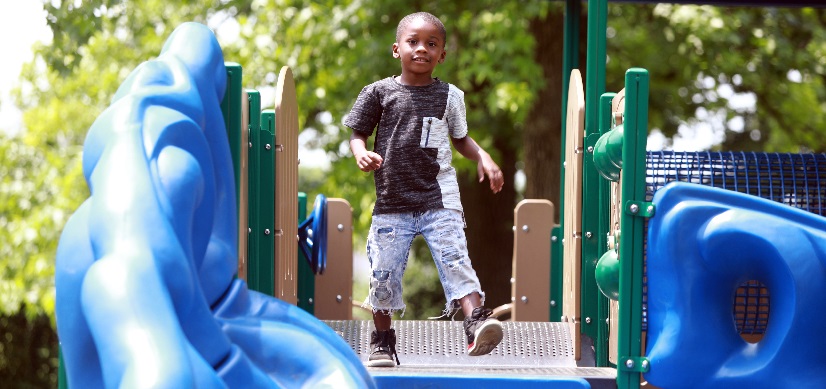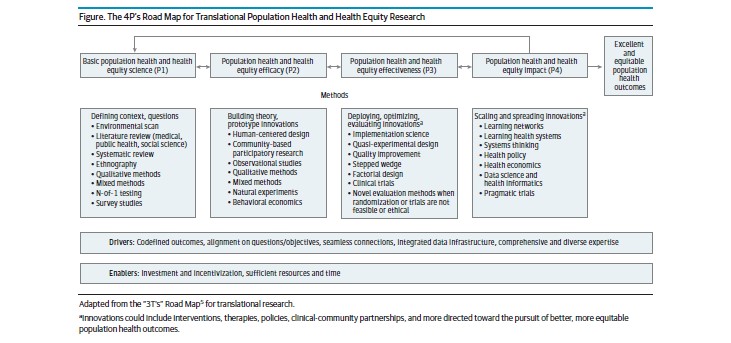Children Need More Opportunities for Physical Activity in Child-Care Settings
Research By: Kristen Copeland, MD
Post Date: May 18, 2022 | Publish Date: May 18, 2022

Less than half of early education and child-care programs included in a nationwide sample met recommended guidelines for providing daily physical activity for children aged 1 to 5 years, according to a study published May 18, 2022, in Pediatrics.
Many children rely on their time in child-care settings as their primary opportunity to be physically active. Approximately 60% of preschool-aged children in the United States attend center-based care and those children spend an average of 30 hours per week in these programs. However, many programs appear to fall short of national guidelines for physical activity.
“To our knowledge, this is the first national study of its kind with the goal of trying to understand what opportunities children who attend child-care programs have to be physically active,” says Kristen Copeland, MD, Division of General and Community Pediatrics, and senior author of the study. “We know that children this age are entirely dependent on the adults who care for them for opportunities to be active and go outside. We also know that daily physical activity is crucial for the developing body and mind, and even for socio-emotional wellness, so this study is timely and important to get a snapshot of where we are currently for U.S. preschoolers.”
Not enough time spent outdoors, nor being active indoors
The study compared data collected from 227 classrooms across the U.S. The sample included 96 private child-care centers, and 131 in Head Start programs.
The classrooms reflected a nationally representative sample of centers participating in the U.S. Department of Agriculture Child and Adult Care Food Program. The activity guidelines used in the study come from the Caring for Our Children (CFOC) guidance from the American Academy of Pediatrics.
Observers, organized by Abt Associates, a social sciences research company based in Cambridge, MA, were placed into each classroom for a day. They tallied designated outdoor and indoor play spaces, minutes children spent in those play spaces, barriers and facilitators to physical activity, and classroom time spent being physically active (walking or dancing), sedentary (seated or lying down) or neither.
While virtually all centers offered opportunities for physical activity, the study found that only 74% of programs met national guidance on sufficient number of outdoor opportunities and just 50% met guidance of at least 60 to 90 minutes of physical activity. Only 43% met both sets of guidelines.
“Our results tell us that while almost all U.S. preschoolers are getting at least some time daily to be physically active, there is ample room for improvement to meet national and American Academy of Pediatrics guidelines for daily provisions of physical activity,” Copeland said. “Most programs have schedules that are in line with national guidelines for number and timing of outdoor opportunities, so it could be as simple as ensuring programs adhere to posted schedules.”
Barriers to activity time revealed
The team found that poor weather and staff not joining in outdoor play were associated with 74 and 31 fewer minutes devoted to physical activity, respectively, compared to other centers in the review.
“The barrier we saw that had the largest negative impact was inclement weather. So, making sure that programs have a place where children can be active indoors on days that weather does not permit going outdoors, or making sure children are dressed appropriately for cold weather, or the playground has a covered area on rainy days is important,” Copeland says. “Just getting outside for a little bit can settle a child down and help them be calmer and more attentive in the classroom.”
Another barrier to physical activity was teachers not joining in with the children.
“We know that children take cues from their caregivers, so joining them in play or even just a simple positive comment about, ‘look how fast you are running!’ can really be motivating to a preschooler,” Copeland says.
Funding for this study was provided by the U.S. Department of Agriculture Food and Nutrition Service (AG-3198-C-14-0017).
| Original title: | Physical Activity Opportunities in US Early Child Care Programs |
| Published in: | Pediatrics |
| Publish date: | May 18, 2022 |
Research By







